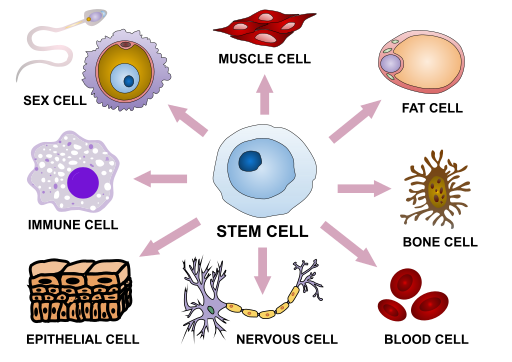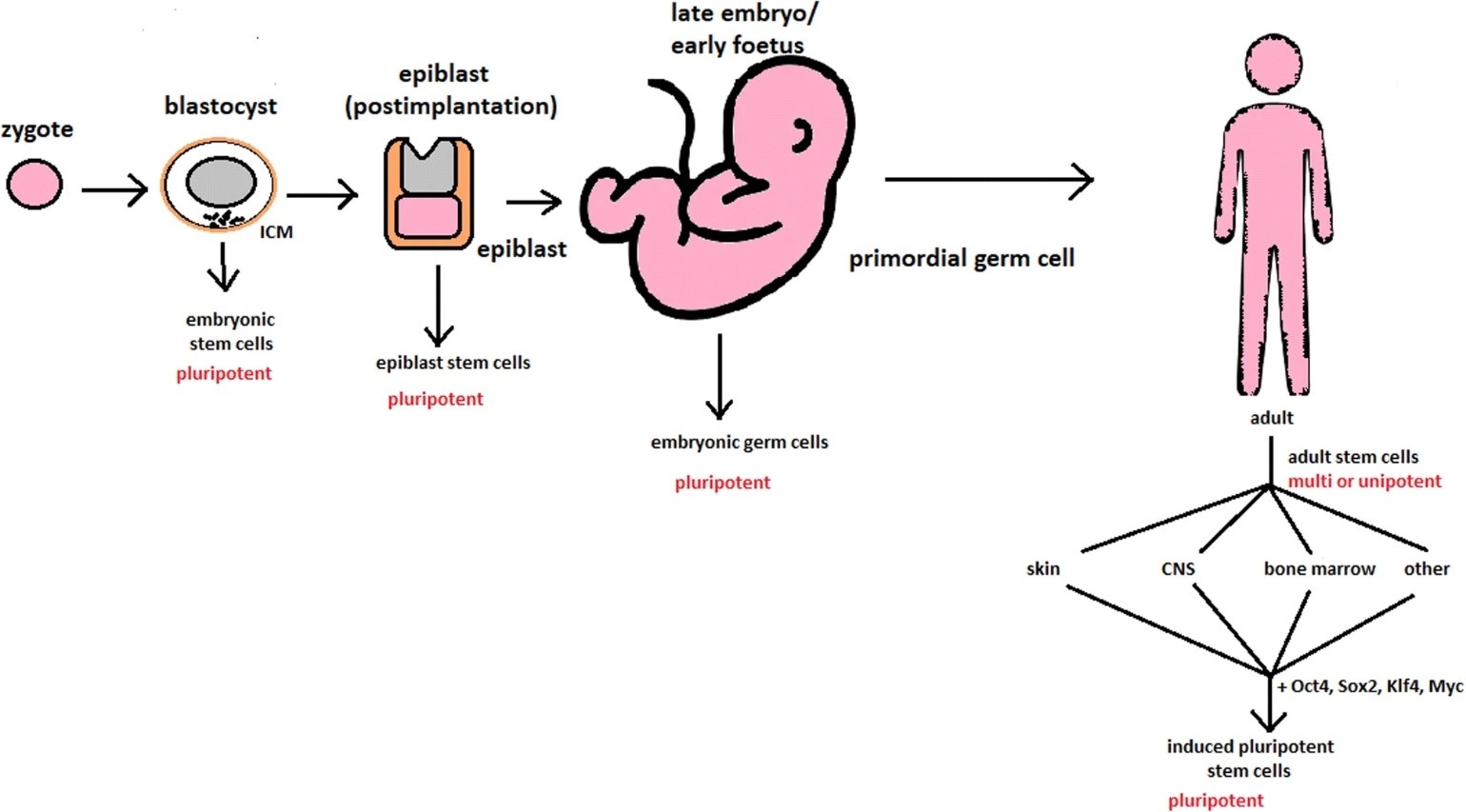Stem cells are a group of undifferentiated cells characterized by their ability to proliferate widely (self-renewal), usually from a single cell (clone), and differentiate into different types of cells and tissues.

Since their discovery in 1963, stem cells have been regarded as promising candidates for tissue engineering, organ regeneration, cell-based diagnosis and disease models. Stem cells in vivo are established in a "niche", and specific anatomical locations regulate how stem cells participate in the production, maintenance and repair of tissues. Niche is the basic unit of tissue physiology, integrating signals that regulate the balance response of stem cells and the body's needs. This kind of microenvironmental protection defends stem cells from physiological stimulation, and protects the host from the excessive proliferation of stem cells.
The simplest way to categorize stem cells is to divide stem cells into three types based on their origin.
 Fig.1 Changes of stem cells in human body development.2
Fig.1 Changes of stem cells in human body development.2
ESCs, as the name suggests, are mostly derived from embryonic blastocysts in the natural preimplantation stage of the uterus. The blastocyst is 3-5 days old and is a cell cluster under a hollow microscope. The differentiation of ESCs occurs when they come together to form embryoid bodies. The differentiation of embryonic stem cells is spontaneous and uncontrolled. Therefore, they are defined by unlimited self-renewal and pluripotency.
ASCs can be derived from a series of adult tissues, such as skin, bone marrow, blood vessels, skin, muscle and bone. They have the ability of multipotential differentiation, indicating their tissue origin. For example, hematopoietic stem cells (HSCs) and mesenchymal stem cells (MSCs) exist in bone marrow, while neural stem cells (NSCs) exist in the subventricular zone and hippocampus. As ASCs can differentiate into the most special cells in the tissues or organs they originate from, their differentiation is highly limited. The main role of ASCs in organisms is to maintain and repair the tissues in which they are located. They appear in the body after embryonic development.
iPSCs are originally ASCs, which are expressed as ESCs after gene recombination. They are produced by genetic reprogramming of differentiated somatic cells (i.e., fibroblasts) into de-differentiated stem cells by binding to ectopic expression of transcription factors. For example, Gifford CA et al. reprogrammed patient-derived fibroblasts into pluripotent stem cells through the expression of OCT3/4, SOX2 and KLF4.
Stem cells have changed the care of patients with hematology, oncology, dermatology, ophthalmology and orthopedics. The potential application of stem cells in medicine goes beyond the concept of stem cells as alternative components.
The role of stem cell therapy in medicine is developing along at least three lines:
References
For Research Use Only. Not For Clinical Use.